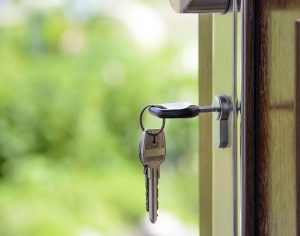Stay Safe with an HOA Emergency Preparedness Plan
No one can accurately tell when a severe storm, natural disaster, or unforeseen building issue will occur. That’s why it’s essential community associations take the necessary precautions to prepare.
One vital way board members can accomplish this is to create an HOA emergency preparedness plan. It will serve as a contingency guide that specifies the exact procedures a board must take to manage and handle any urgent situation.
Now you may be wondering, “What goes into an effective HOA emergency preparedness plan?” Here are seven vital action items to include.
1. Insurance Documents
When an emergency occurs, it’s best to have your insurance policies readily available. Be sure to create a copy of each policy and place them in your HOA emergency preparedness plan. That way you’ll be able to quickly identify what documentation needs to be addressed and begin the filing process as soon as possible.
2. Site & Facility Plans
Every HOA emergency preparedness plan must include a site and facility plan. It will outline and label building layouts, parking areas, access roads, and other essential areas of the community that need to be made a priority during emergency situations. Critical areas that a board should highlight in their plan include:
- Lift stations
- Shut-off valves
- Power supplies
- Ventilation
- Debris staging areas
- Electrical boxes
- Alarm systems
- Fire suppression systems
- Security & surveillance systems
3. Evacuation Plan
One of the most essential parts of an HOA emergency preparedness plan is to have an evacuation plan in place. This will instruct homeowners on the proper procedures and protocols to follow when they need to evacuate their homes. To ensure homeowners reach the safe zone, provide them with an easy-to-interpret map and mark the location.
4. Response Plan
How an HOA board responds to an emergency will determine whether it’s handled correctly. First, the board must determine a chain of command and who’s responsible for contacting homeowners, vendors, emergency personnel, etc. Next, they should assign responsibility to members who will oversee controlling access to the unsafe area and keep homeowners away from it. Lastly, an HOA board must develop a post-emergency plan that outlines the steps they need to take to ensure the community is restored and safe.
5. HOA Contact Details
It’s vital to add essential HOA contact information to your emergency preparedness plan. You must have the name, address, phone number, and email address of the following:
• HOA board members
• Vendors
• Insurance provider
• Property management company
• HOA manager
• HOA lawyer
This will ensure you’re able to quickly identify and notify them. It’s also vital to have an updated homeowner directory readily available.
6. Photos of Key Community Areas
In an HOA emergency preparedness plan, it’s wise to include photos that are date-time stamped of important community areas such as properties, amenities, and equipment. This will help you restore them back to their original state in case they’re damaged or broken.
7. Standard Procedures
Not all emergency situations are the same. That’s why it’s important to explain the standard procedures on what to do during fire drills, power outages, building repairs, and more. Your HOA board should meet to discuss every possible situation that should be included in the emergency preparedness plan. This will ensure hazard and threat-specific scenarios are properly addressed.
Keep Your HOA Emergency Preparedness Plan Organized
To ensure your HOA emergency preparedness plan is readily available for all HOA board members, AR Management created Neighborhood Connections, an HOA management platform. Our patent-pending technology uses PaaS management software, which automates all aspects of an HOA emergency preparedness plan, including mission-critical documentation and management operations. It ensures HOA boards can respond and address any emergency situation in an efficient and transparent way. Contact us today to request a consultation!




